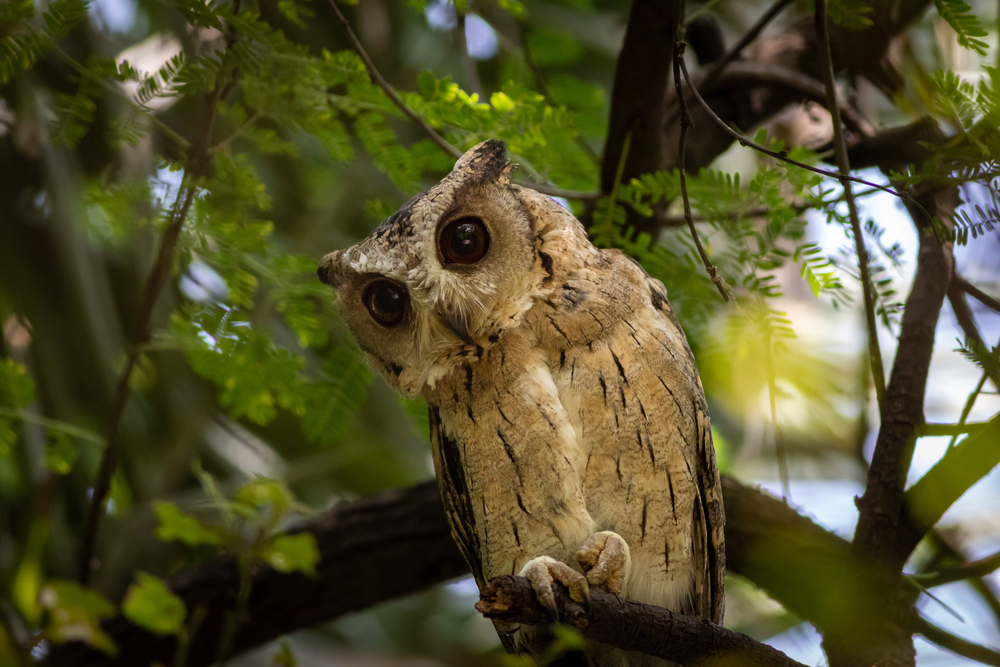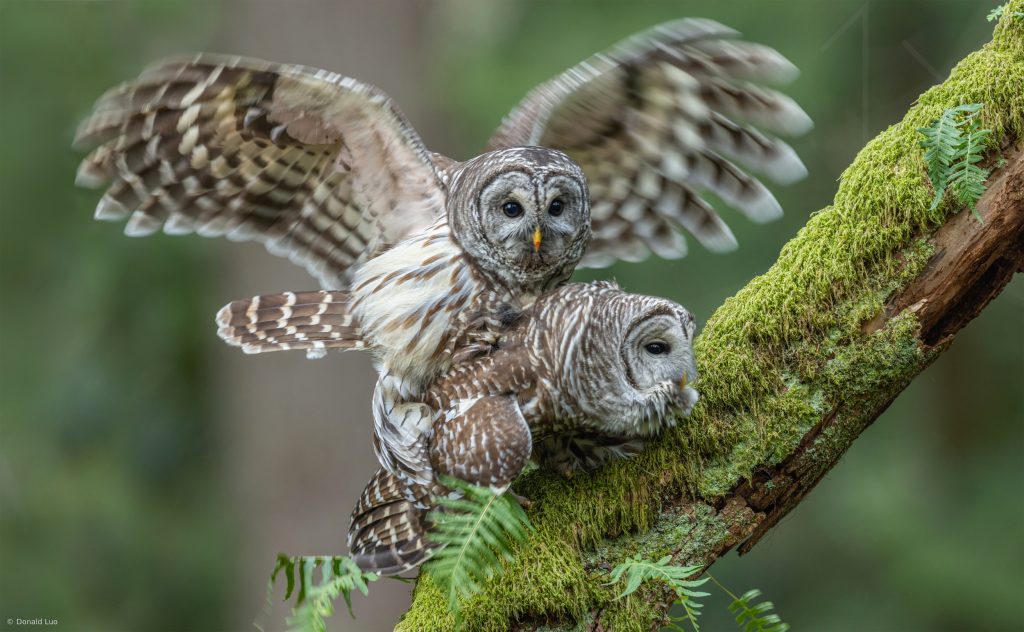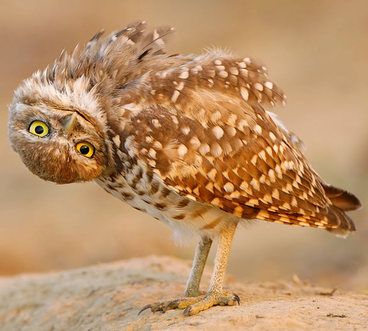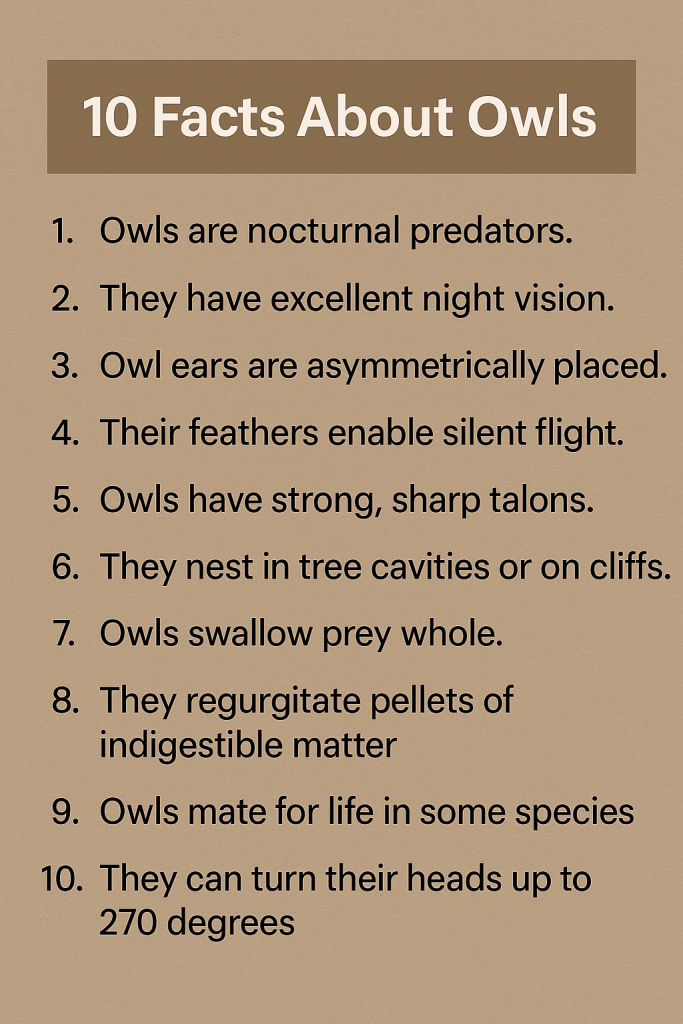Speciality of Owl: Owls are among the most fascinating birds in the animal kingdom, often associated with wisdom, mystery, and the night. These nocturnal predators have adapted exceptionally well to their environments, allowing them to hunt with precision in the darkest of nights. Their silent flight, unique facial features, and remarkable sensory adaptations make owls one of the most specialized birds on the planet.

Despite their eerie reputation, owls play a crucial role in maintaining ecological balance. They help control rodent populations and are integral to the forest and wildlife ecosystems. From their powerful talons and curved beaks to their forward-facing eyes and asymmetrical ears, every part of an owl’s body is built for hunting and survival.
Understanding the speciality of owl requires delving into their behavior, anatomy, hunting techniques, family structures, and habitats. In this post, we’ll explore the unique characteristics that make owls stand out among birds and highlight their roles in nature and folklore alike.
Significance of Owls in Different Religions
Owls have held symbolic meaning in various religions and cultures throughout history. While some traditions see them as messengers of wisdom and protection, others associate them with omens or the supernatural. The owl’s mysterious nocturnal nature and silent flight have contributed to both reverence and fear in spiritual beliefs across the globe.
Symbolism in Major Religions
| Religion | Owl Symbolism |
|---|---|
| Hinduism | Vehicle of Goddess Lakshmi (Wealth) |
| Ancient Greece | Wisdom, associated with Athena |
| Christianity | Darkness, solitude, sometimes evil |
| Native American | Guardian of sacred knowledge |
| African Beliefs | Spirits, ancestors, omens |
Common Beliefs Across Cultures:
- Wisdom and Knowledge: In Greek mythology, the owl represents intelligence and insight.
- Protection and Guidance: Many Native American tribes believe owls guard sacred knowledge.
- Wealth and Fortune: In Hinduism, the owl is the trusted companion of Goddess Lakshmi.
- Death and Mystery: In some Christian and African beliefs, owls symbolize death or spiritual transitions.
The owl’s spiritual symbolism is vast and varied, deeply rooted in each religion’s worldview, making it one of the most mystically significant birds in human history.
Key Takeaways
- Owls are nocturnal birds of prey with exceptional vision and hearing.
- Their feathers allow silent flight, aiding in stealthy hunting.
- They use strong talons and sharp beaks to capture and consume prey.
- Owls are found in various habitats including forests, burrows, and nests.
- Their eyes and ears are uniquely structured to enhance sensory capabilities.
- Owls contribute to wildlife balance by preying on mice, squirrels, and chicks.
- Owl behavior includes roosting, mating, incubation, brooding, and fledging.
- Plumage color helps owls camouflage in their habitat.
- Owls often form monogamous pairs and care for their young together.
- Their retina and facial disc structure enhance night vision and directional hearing.
Unique Physical Features of Owls
Exceptional Eyes and Vision
Owls possess some of the largest eyes relative to their body size among birds. These eyes are forward-facing, providing binocular vision which enhances depth perception—crucial for hunting. The retina is packed with rod cells that are highly sensitive to light, making it possible for owls to see in extremely low-light conditions.
Asymmetrical Ears for Superior Hearing
An owl’s ears are not symmetrical, with one ear usually higher than the other. This design allows them to pinpoint the location of sounds with remarkable accuracy. They can detect the slightest rustle of prey like mice or squirrels hiding in the grass or snow.
Silent Flight Adaptations
Their feathers are uniquely structured to muffle sound, allowing them to fly silently. The leading edges of their wing feathers are serrated, breaking up turbulence and reducing noise. This adaptation gives owls a stealth advantage over their prey.
Owls as Apex Predators
Powerful Talons and Beaks
Owls are equipped with sharp talons and hooked beaks for catching and dismembering prey. The grip of their talons is incredibly strong, often used to crush the skulls of rodents or birds.
Diet and Prey
Their diet primarily consists of small animals such as mice, squirrels, birds, and chicks. Some species are known to eat fish, insects, and amphibians depending on their habitat. Owls swallow small prey whole and later regurgitate indigestible parts like bones and feathers in the form of pellets.
Hunting Behavior
Owls use perches or glide silently through their territory to ambush prey. Their excellent night vision and directional hearing make them formidable nocturnal hunters. Many species also hunt from trees or while hanging out around nests and burrows.
3. Plumage and Camouflage
Varied Colour and Pattern
Owl plumage comes in colors like brown, grey, white, and even rusty red. These colours help them blend into their environment, whether it’s a forest, grassland, or desert.
Role of Plumage in Survival
Their feathers not only provide camouflage but also aid in temperature regulation and silent flight. The soft edges of their feathers reduce aerodynamic noise, a crucial feature for hunting.
Table: Common Owl Plumage Colours by Habitat
| Habitat | Common Plumage Colour | Example Species |
|---|---|---|
| Forest | Brown/Grey | Barred Owl |
| Snowy Area | White | Snowy Owl |
| Desert | Light Brown/Sandy | Barn Owl |
Owl Behavior and Social Structure
Roosting and Nesting
Owls roost in quiet, sheltered places during the day. They often nest in burrows, tree cavities, old nests of other birds, or even man-made structures.
Family Life: Mating and Pairing Up
Most owls are monogamous and form strong bonds with their partners. During the mating season, they engage in courtship displays, hooting, and food sharing.

Parental Roles: Incubation to Fledging
The female typically incubates the eggs while the male hunts and provides food. After hatching, both parents participate in feeding and protecting the chicks until they are ready for fledging.
Eyes and Vision: Nighttime Specialists
The Role of Retina in Night Vision
Owls have a high number of rod cells in their retina which are more sensitive to light than cone cells. This adaptation allows them to see well in darkness.
Eye Position and Field of View
Unlike most birds, owl eyes are positioned in the front, providing them a wider field of binocular vision but requiring them to move their whole head to shift gaze.
Fun Fact: Neck Rotation
Owls can rotate their necks up to 270 degrees, compensating for their fixed eye sockets and enhancing their field of view.

Hearing: Directional and Precise
Unique Ear Structure
The asymmetry in owl ears allows them to locate sounds vertically and horizontally. The facial disc helps funnel sound to the ears.
Hunting by Sound
Even in complete darkness or when prey is hidden under leaves or snow, owls can locate their food purely by sound.
Table: Comparison of Owl Hearing vs. Human Hearing
| Feature | Owl | Human |
| Ear Symmetry | Asymmetrical | Symmetrical |
| Sound Detection Time | Microseconds | Milliseconds |
| Frequency Range | Wide | Narrower |
Owl Talons and Beaks: Tools of the Predator
Anatomy of Talons
Owls have zygodactyl feet—two toes forward and two backward—enhancing their grip. Their talons are extremely sharp and powerful.
Beak Functionality
The curved beak is adapted to tear flesh, perfect for their carnivorous diet. Unlike other birds, the beak of an owl is usually hidden by feathers, maintaining aerodynamic form.
Usage in Hunting
Talons strike first, delivering a fatal grip. The beak then assists in tearing apart the prey for consumption.
Habitat Preferences
Forests to Burrows
Owls are versatile and inhabit diverse environments—from dense forests and open plains to deserts and Arctic tundra.
Nesting Sites
They nest in tree cavities, cliff ledges, old nests, and burrows. Some use nest boxes provided by humans in urban settings.
Adapting to Human Areas
Species like the barn owl have adapted to live near human settlements, finding food in farms and roosting in barns or abandoned buildings.
Diet and Food Habits
Common Prey
Owls feed on a variety of animals including mice, squirrels, chicks, frogs, insects, and small birds.
Pellet Formation
Indigestible parts like bones and feathers are regurgitated as pellets. These pellets are studied to understand owl diets and hunting behavior.
Hunting Methods
Owls sit silently on perches or fly low over the ground to locate and catch prey, often using stealth and speed.
10. Lifespan and Survival Challenges
Average Lifespan
Depending on species, owls live 10-25 years in the wild. Some species live even longer in captivity.
Predators and Threats
Young owls and eggs are vulnerable to snakes, other birds, and mammals. Habitat loss and human encroachment are major threats.
Conservation Status
While many owls are not endangered, some species like the Spotted Owl face population decline due to habitat destruction.
Reproductive Cycle
Incubation Period
After mating, the female lays eggs which are incubated for 25-35 days. Eggs hatch in intervals, leading to size differences among chicks.
Brooding and Care
Females brood chicks while males provide food. Chicks grow rapidly, developing feathers and learning to fly within weeks.
Fledging
Young owls begin to fledge—leave the nest—around 5 to 10 weeks, depending on the species.
Fascinating Owl Species Around the World
Snowy Owl
White plumage helps it blend into snowy environments. Found in Arctic tundra and known for daytime hunting.
Barn Owl
Recognizable by its heart-shaped face. Common in farmlands and known for its eerie, screeching call.
Great Horned Owl
Large and powerful, often called the “tiger of the sky.” Known for tufts that resemble horns.
Owls in Folklore and Culture
Symbolism
Often symbolize wisdom, mystery, or omens. In some cultures, owls are protectors; in others, they are harbingers of doom.
Representation in Media
Owls appear in books, movies, and myths—from Harry Potter’s Hedwig to ancient Greek mythology.
Cultural Differences
While Western cultures often associate owls with intelligence, some Eastern cultures view them as spiritual guardians.
Fun and Surprising Owl Facts

- Owls can fly without making a sound.
- They don’t have eyeballs; their eyes are tube-shaped.
- Some owls can swim if needed.
- A group of owls is called a “parliament.”
- Owls can hear prey under several inches of snow.
The Importance of Owls in Ecosystems
Rodent Control
By feeding on mice and other rodents, owls help prevent crop damage and disease spread.
Biodiversity Indicator
Their presence indicates a healthy environment with balanced prey populations and suitable habitat.
Food Web Role
Owls are top-tier predators that play a critical role in maintaining ecological equilibrium.
FAQs on Speciality of Owl
1. What makes owls special compared to other birds?
Owls are unique due to their exceptional night vision, silent flight, asymmetrical ears for pinpoint hearing, and powerful talons. These features make them expert nocturnal predators.
2. How do owls hunt their prey at night?
Owls rely on their excellent night vision and highly sensitive hearing to detect and capture prey such as mice, squirrels, and chicks, even in complete darkness.
3. Why do owls have forward-facing eyes?
Unlike most birds, owls have forward-facing eyes, giving them binocular vision for accurate depth perception. This helps them judge distances precisely while hunting.
4. What is the role of feathers in owl flight?
Owl feathers are specially structured to minimize noise during flight. The soft edges and unique plumage design allow them to glide silently, which is key for stealth hunting.
5. Where do owls build their nests?
Owls nest in various places including tree hollows, abandoned nests, burrows, and even man-made structures. Some species also nest on the ground depending on their habitat.
6. Do all owls live in forests?
No, owls can adapt to different habitats like forests, deserts, grasslands, and even urban areas. Their plumage colour often helps them blend into their specific environment.
7. What do owl chicks eat?
Owl chicks are fed by their parents and eat small animals like insects, mice, or birds. As they grow, their diet becomes similar to adult owls, consisting of larger prey.
8. How do owls care for their young?
Owl parenting involves the female incubating the eggs while the male provides food. After hatching, both parents feed and protect the chicks through brooding and fledging stages.
9. What is the function of an owl’s talons and beak?
Owls use their talons to grab and kill prey, while their sharp, curved beaks tear the food into manageable pieces for eating or feeding their young.
10. Why are owls important to wildlife and ecosystems?
Owls help control populations of rodents and small animals, maintaining ecological balance. They are vital to forest and wildlife health as top-level predators in their food chain.
Visit: What Is The Specialty of to Explore more interesting fun facts about birds and animals.
